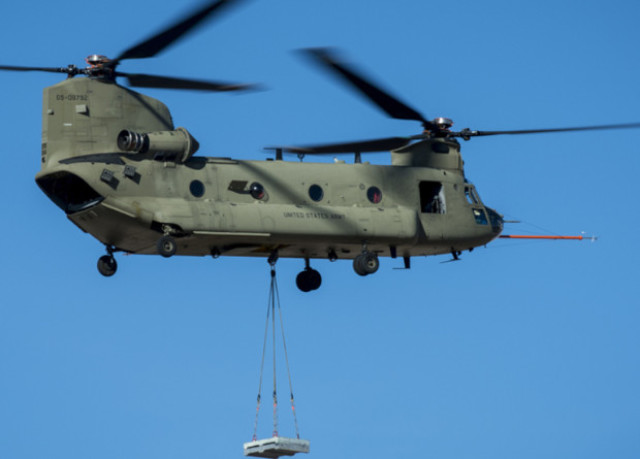Experts of the US Army during tests of the upgraded version of the CH-47F Chinook Block II heavy transport helicopter found increased vibration of the rotor blades. According to Defense News, with reference to the test report, the vibrations were detected in several modes: parking on the ground with the engines running and the propellers rotating, hovering and flying in a straight line.
According to the report of experts, the detected vibrations exceed the permissible norms and can lead to various kinds of flight accidents. In addition, the military, who were on board the helicopter during flight tests, after the flight noted various unusual physiological conditions caused by vibrations. These include increased fatigue and poor health.
The Chinook Block II differs from the basic version of the CH-47F by the extensive use of composites in the design of the rotor blades, which allowed them to be somewhat lighter. In addition, the helicopter is equipped with more powerful engines. In combination with the new design of the rotors, these improvements have increased the load capacity of the machine by 1.8 tons to 10 tons.
Other improvements include updated onboard electronics, more powerful generators, and a redesigned fuel system. In the latter, three fuel tanks are placed inside one container. This made it possible to abandon the system of pumping pumps and additional fuel lines. As a result, the weight of the entire fuel system decreased by 90 kilograms, and the refueled volume of fuel increased slightly.
During the tests, the US Army specialists revealed several more shortcomings. In particular, it turned out that after receiving ballistic damage, the fuel tanks are not able to restore tightness. When checking the transmission on the ground, the flight model of the helicopter received structural damage, which is not specified.
The American aircraft manufacturer Boeing now has to redesign the blades, fuel system and make changes to the design of the transmission. Improvements to the design of the Chinook Block II will be made gradually. In March 2021, the US Army specialists plan to start testing the modified rotor blades. The need for improvements may affect the timing of the start of military tests of the helicopter, planned for the second quarter of 2021.
Vasily Sychev

